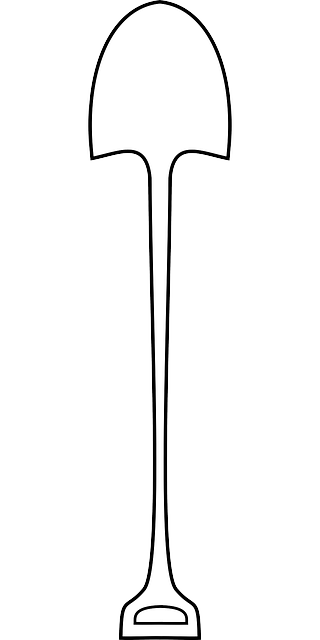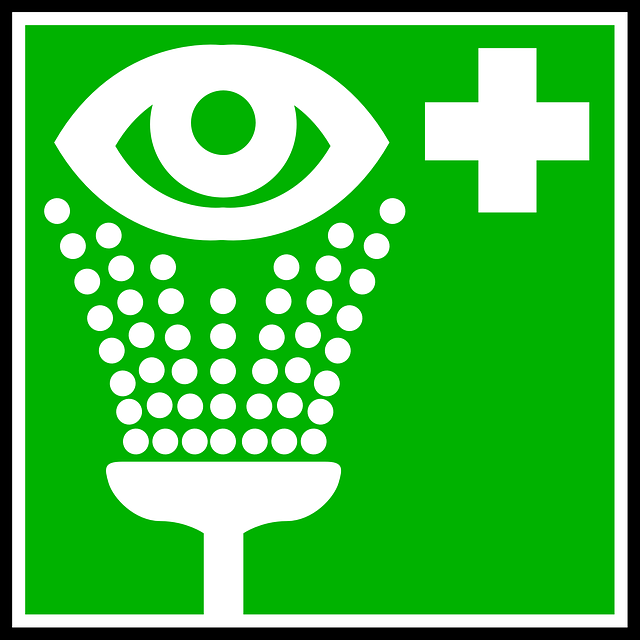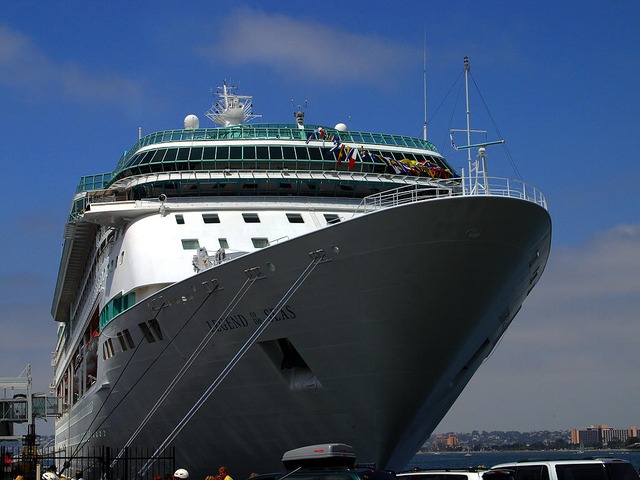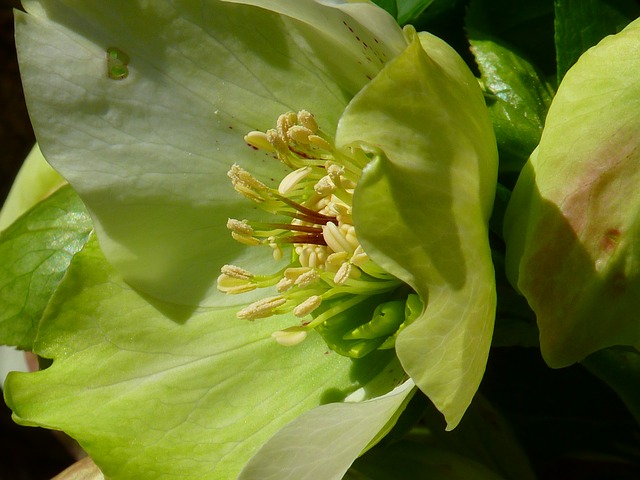رنگيت ماليزي
|
رنگيت ماليزي Ringgit Malaysia (Rumi) ريڠڬيت مليسيا (Jawi Malay) | |||
| |||
| كود ISO 4217 | MYR | ||
|---|---|---|---|
| المستعمل | ماليزيا | ||
| التضخم | 2.1% | ||
| المـُصدر | The World Factbook, 2007 est. | ||
| الوحدة الأصغر | |||
| 1/100 | sen | ||
| الرمز | RM | ||
| Coins | 5, 10, 20, 50 sen | ||
| Banknotes | RM1, RM5, RM10, RM50, RM100 | ||
| البنك المركزي | Bank Negara Malaysia | ||
| المسقط الالكتروني | www.bnm.gov.my | ||
| Mint | Royal Mint of Malaysia | ||
| Website | royalmintmalaysia.com or www.royalmint.com.my | ||
الرينجيت الماليزي ( الجمع : رينجيت ; رسمياً الدولار الماليزي ) هي العملة الرسمية لماليزيا . ينقسم الرينجيت الواحد إلى 100 سن (سنت) وشفرتة العملة هي MYR . يقوم بأصدار العملة البنك المركزي الماليزي المعروف بأسم بنك نيجارا ماليزيا
Etymology
The word ringgit means "jagged" in Malay and was originally used to refer to the serrated edges of silver Spanish dollars which circulated widely in the area during the 16th and 17th century Portuguese colonial era. The Singapore dollar and the Brunei dollar are also called ringgit in Malay (although currencies such as the U.S. and Australian dollars are dolar), hence its official abbreviation RM for Ringgit Malaysia.
The Malay names ringgit and sen were officially adopted as the sole official names in August 1975. Previously they had been known officially as dollars and cents in English and ringgit and sen in Malay, and in some parts of the country this usage continues. For example, in Malaysia one ringgit is "one dollar" in English and "tsit8-kho·1" (蜀塊/蜀块) in Hokkien. In the northern states of Peninsular Malaysia, denominations ofعشرة sen are called kupang in Malay ("poat8" in Hokkien), e.g. 50 sen isخمسة kupang.
History
On June 12, 1967, the Malaysian dollar, issued by the new central bank, Bank Negara Malaysia, replaced the Malaya and British Borneo dollar at par. The new currency retained all denominations of its predecessor except the $10,000 denomination, and also brought over the colour schemes of the old dollar. Over the course of the following decades, minor changes were made on the notes and coins issued, from the introduction of the M$1 coin in 1967, to the demonetisation of M$500 and M$1000 notes during the 1990s.
The use of the dollar sign "$" (or "M$") was not replaced by "RM" (Ringgit Malaysia) until the 1990s, though internationally "MYR" (MY being the country code for Malaysia) is more widely used.
As the Malaysian dollar replaced the Malaya and British Borneo dollar at par, the new dollar was originally valued at 8.57 dollars per 1 British pound sterling. In November 1967, five months of the introduction of the dollar, the pound was devalued by 14.3%. The new currency was not affected but earlier notes of the Malaya and British Borneo dollar were still pegged to pound at 8.57 dollars per 1 pound and, consequently, these notes were reduced in value to 85 cents per dollar.
Despite the emergence of new currencies in Malaysia, Singapore and Brunei, the Interchangeability Agreement which the three countries continued to adhere to as they were originally parts of a currency union meant the Malaysian dollar was also exchangeable at par with the Singapore dollar and Brunei dollar until May 8, 1973, when the Malaysian government pulled out of the agreement. The Monetary Authority of Singapore and the Brunei Currency and Monetary Board still maintain the interchangeability of their two currencies, as of 2009.
Between 1995 and 1997, the ringgit was trading as a free float currency at around 2.50 to the U.S. dollar, before dipping to under 3.80 to the dollar by the end of 1997, following the year's East Asian financial crisis. For the first half of 1998, the currency fluctuated between 3.80 and 4.40 to the dollar, before Bank Negara Malaysia pegged the ringgit to the US dollar in September 1998, maintaining its 3.80 to the dollar value for almost seven years, while remaining floated against other currencies.
The ringgit lost 50% of its value against the US dollar between 1997 and 1998, and suffered general depreciation against other currencies between December 2001 and January 2005. As of September 4, 2008, the ringgit has yet to regain its value circa 2001 against the Singapore dollar (SGD) (2.07 to 2.40 to the MYR), the Euro (EUR) (3.40 to 4.97 to the MYR), the Australian dollar (AUD) (1.98 to 2.80 to the MYR), and the British pound (GBP) (5.42 to 6.10 to the MYR).
| 1999 | 2000 | 2001 | 2002 | 2003 | 2004 | 2005 | 2006 | 2007 | 2008 (as of Dec 11) | |
|---|---|---|---|---|---|---|---|---|---|---|
| United States dollar | 3.80 | 3.80 | 3.80 | 3.80 | 3.80 | 3.80 | 3.7872 | 3.6669 | 3.4356 | 3.5525 |
| Euro | 4.0535 | 3.5089 | 3.4025 | 3.5925 | 4.2999 | 4.7267 | 4.7144 | 4.6028 | 4.707 | 4.7021 |
| British pound | 6.1479 | 5.7602 | 5.4802 | 5.7096 | 6.2116 | 6.9511 | 6.8928 | 6.7531 | 6.8748 | 5.2938 |
| Singapore dollar | 2.2426 | 2.2034 | 2.1208 | 2.1226 | 2.1807 | 2.2488 | 2.2762 | 2.3082 | 2.2807 | 2.3849 |
| Australian dollar | 2.4525 | 2.20995 | 1.9647 | 2.0661 | 2.4786 | 2.7997 | 2.8874 | 2.7622 | 2.8796 | 2.3637 |
| Japanese yen | 0.033546 | 0.035257 | 0.031291 | 0.030395 | 0.032832 | 0.035154 | 0.034377 | 0.031517 | 0.029194 | 0.03885 |
| Renminbi | 0.459 | 0.459 | 0.4591 | 0.4589 | 0.4589 | 0.4591 | 0.4622 | 0.4599 | 0.4519 | 0.5181 |
| Source: x-rates.com | ||||||||||
On July 21, 2005, Bank Negara announced the end of the peg to the US dollar immediately after الصين's announcement of the end of the renminbi peg to the U.S. dollar. According to Bank Negara, Malaysia allows the ringgit to operate in a managed float against several major currencies. This has resulted in the value of the ringgit rising closer to its perceived market value, although Bank Negara has intervened in financial markets to maintain stability in the trading level of the ringgit.
Following the end of the currency peg, the ringgit appreciated to as low as 3.16 to the U.S. dollar in April 2008. The ringgit had also enjoyed a period of appreciation against the Hong Kong dollar (HKD) (from 0.49 to 0.44 to the MYR) and the renminbi (CNY) (0.46 to 0.45 to the MYR) as recently as May 2008.
Fiscal mismanagement by the ruling federal government, political uncertainty following the country's 2008 general election and the 2008 Permatang Pauh by-election, falling oil prices, and the lack of intention by Bank Negara to increase already low interest rates (which remained at 3.5% since April 2006) led to a slight fall of the ringgit's value against the US dollar between May and July of 2008, followed by a sharper drop between August and September of the same year. As a result, the US dollar appreciated significantly to close at 3.43 to the MYR as of September 4, 2008 , while other major currencies, including the renminbi and Hong Kong dollar, follow suit. The drop brings the ringgit to its weakest since September 24, 2007, and ranks it as the second worst performing Southeast Asian currency between June 2008 and September 2008.
Current MYR exchange rates
| From Yahoo! Finance: | AUD CAD CHF EUR GBP HKD JPY USD SGD CNY |
| From XE.com: | AUD CAD CHF EUR GBP HKD JPY USD SGD CNY |
| From OANDA.com: | AUD CAD CHF EUR GBP HKD JPY USD SGD CNY |
Coinage
First series (1967)
The first series of sen coins were introduced in 1967 in denominations of 1 sen,خمسة sen,عشرة sen, 20 sen, 50 sen, followed by the introduction of the 1 ringgit coin (which continued to use the $ symbol and is the largest coin in the series) in 1971. While varied by diameters, virtually all the coins were minted in near-consistent obverse and reverse designs, the latter depicting the then recently completed Malaysian Houses of Parliament and the federal star and crescent moon derived from the canton of the Malaysian flag. All coins were minted from cupronickel, the only exception being the 1 sen coin, which was first composed from bronze between 1967 to 1972, followed by steel clad with copper from 1973 onwards. The 50 sen coin is the only coin in the series to undergo a redesign—a minor modification on its edge in 1971 to include "Bank Negara Malaysia" letterings.
Minting of the first sen series was halted in 1989 when the second series was introduced in circulation. The coins, however, remain in legal tender as of 2008, but have steadily declined in numbers since the 1990s. The $1 coin has not been in common circulation since the introduction of the second series $1 coins in 1989.
| First series [1] | |||||||
|---|---|---|---|---|---|---|---|
| Value | Technical parameters | Description | Date of | ||||
| Diameter | Composition | Edge | Obverse | Reverse | first minting | issue | |
| 1 sen | 18 mm | Bronze | Plain | State title, value, year of minting | Parliament House and a 13-pointed star and crescent moon | 1967 | 12 June 1967 |
| 1 sen | Copper clad steel | 1973 | ? | ||||
| 5 sen | 16 mm | Cupronickel | Reeded | State title, value, year of minting | Parliament House and a 13-pointed star and crescent moon | 1967 | 12 June 1967 |
| 10 sen | 19 mm | ||||||
| 20 sen | 23 mm | ||||||
| 50 sen | 28 mm | ||||||
| 50 sen | Lettered "BANK NEGARA MALAYSIA" | 1971 | ? | ||||
| $1 | 33 mm | Lettered "BANK NEGARA MALAYSIA" | Parliament House and a 14-pointed star and crescent moon. The crescent and stars are depicted in thinner forms; the crescent itself is significantly larger and situated in the same position as the Parliament House. | 1971 | 1 May 1971 | ||
Second series (1989)
The second series of sen coins entered circulation in late-1989, sporting completely redesigned observes and reverses, but predominantly retaining the design of edges, diameters and composition of the previous series' coins as of 1989—the 1 ringgit coin an exception. Changes include the inclusion of a Chinese hibuscus (Malay: Bunga Raya), the national flower of Malaysia, on the upper half of the observe, and the depiction of items of solely Malay culture on the reverse.
The 1 ringgit coin is the only coin to have received a total revision. In addition to changes on its observe and reverse, the size of the coin was also reduced from a diameter of 33 mm to 24 mm, and was minted from an alloy of copper, zinc and tin, as opposed to the first series' cupronickel. The $ symbol was brought over to the new coin, but was dropped in favor of "RINGGIT" for coins minted from 1993 onwards. On December 7, 2005, the 1 ringgit coin was demonetised and withdrawn from circulation. This was partly due to problems with standardisation (two different versions of the second series coin were minted) and forgery.
As of April 1, 2008, a rounding mechanism of prices to the nearestخمسة sen, applied to the total bill only, is in force, which was first announced in 2007 by Bank Negara Malaysia, in an attempt to render the 1 sen coin irrelevant. Individual items and services can still be priced in multiples of 1 sen with the final totaled rounded to the nearestخمسة sen. For example, purchasing two items priced RM4.88 and RM3.14, totalling RM8.02, would then be rounded to RM8.00. If each item had been individually rounded (to RM4.90 and RM3.15 respectively) the incorrect total would have been RM8.05. In practice, individual items will probably remain priced at so-called "price points" (or psychological pricing and odd-number pricing) ending in 98 and 99 to maximize rounding gains for the vendor, especially in the case of single item purchases. Existing 1 sen coins in circulation remain legal tender for payments up to RM2.00.
| Second series [2] | |||||||
|---|---|---|---|---|---|---|---|
| Value | Technical parameters | Description | Date of | ||||
| Diameter | Composition | Edge | Obverse | Reverse | first minting | issue | |
| 1 sen | 18 mm | Bronze clad steel | Plain | Bank title, value, year of minting | Rebana ubi | 1989 | 4 September 1989 |
| 5 sen | 16 mm | Cupronickel | Reeded | Bank title, value, year of minting | Gasing | 1989 | 4 September 1989 |
| 10 sen | 19 mm | Congkak | |||||
| 20 sen | 23 mm | Sirih and kapur container | |||||
| 50 sen | 28 mm | Lettered "BANK NEGARA MALAYSIA" | Wau | ||||
| $1 | 24 mm | Copper-zinc-tin | Reeded | Bank title, "$1", year | Keris with a songket background | 1989 | 4 September 1989 |
| $1 | Bank title, "1 RINGGIT", year of minting | 1993 | ? | ||||
| For table standards, see the coin specification table. | |||||||
Kijang Emas
Three denominations of gold bullion coins, the "Kijang Emas" (the kijang, a species of deer, being part of Bank Negara Malaysia's logo) are also issued, at the face value of RM 50, RM 100 and RM 200. It was launched on July 17, 2001 by Bank Negara Malaysia and was minted by the Royal Mint of Malaysia. The purchase and reselling price of Kijang Emas is determined by the prevailing international gold market price.
Banknotes
Bank Negara Malaysia first issued Malaysian dollar banknotes in June 1967 in $1, $5, $10, $50 and $100 denominations. The $1000 denomination was first issued in 1968. Malaysian banknotes have always carried the image of Tuanku Abdul Rahman, the first Yang di-Pertuan Agong of Malaysia.
ATMs normally dispense RM50 notes, or more rarely, RM10 notes in combination with RM50 notes.
Malaysian banknotes have long followed a colour code originating from colonial times. In the lower denominations this pattern is followed by Singapore and Brunei, and when Bank Negara first introduced the RM2 note it copied the lilac of the Singapore $2 note.
- RM1 - blue
- RM2 - lilac (no longer in circulation)
- RM5 - green
- RM10 - red
- RM20 - brown/white (no longer in circulation)
- RM50 - blue/grey
- RM100 - violet
- RM500 - orange (no longer in circulation)
- RM1000 - blue/green (no longer in circulation)
First series (1967)
The front features Tuanku Abdul Rahman and the back features the traditional design of the Kijang Emas.
| First Series | ||||||
|---|---|---|---|---|---|---|
| Image | Value | Main Colour | Description | Date of issue | ||
| Obverse | Reverse | Obverse | Reverse | |||
| $1 | Blue | Tuanku Abdul Rahman | BNM logo (Kijang Emas) | 1967 | ||
| $5 | Green | |||||
| $10 | Red | |||||
| $50 | Blue/grey | |||||
| $100 | Violet | |||||
| $1000 | purple/green | Parliament building in Kuala Lumpur | 1968 | |||
| لمعايير الجدول، انظر جدول مواصفات الأوراق النقدية. | ||||||
Second series (1982)
The second series was issued with Malaysian traditional ornamental designs in 1982-1984, in $1, $5, $10, $20, $50, $100, $500, and $1000 denominations. The $20 was generally relatively uncommon. The second series notes are still occasionally encountered.
The mark for the blind on the upper left hand corner was removed on the second revision in 1986.
In 1999 the RM500 and RM1000 notes were discontinued and ceased to be legal tender. This was due because of the Asian monetary crisis of 1997 when huge amounts of ringgit were taken out of the country to be traded in these notes. In effect the notes were withdrawn out of circulation and the amount of ringgit taken out of the country in banknotes was limited to RM1000.
In 1993, $1 notes were discontinued and replaced by the $1 coin.
| Second Series (a) | |||||||
|---|---|---|---|---|---|---|---|
| Image | Value | Main Colour | Description | Date of issue | Remark | ||
| Obverse | Reverse | Obverse | Reverse | ||||
| $1 | Blue | Tuanku Abdul Rahman | The National Monument in Kuala Lumpur | 1982 | with blind mark. | ||
| $5 | Green | King's Palace in Kuala Lumpur | 1981 | ||||
| $10 | Red | Old Kuala Lumpur Railway Station | 1983 | ||||
| $20 | Brown/white | Bank Negara Malaysia headquarters in Kuala Lumpur | 1982 | ||||
| $50 | Blue/grey | National Museum in Kuala Lumpur | 1983 | ||||
| $100 | Violet | National Mosque in Kuala Lumpur | 1983 | ||||
| $500 | Orange | Former Supreme Court building in Kuala Lumpur | 1982 | ||||
| $1000 | Blue/green | Parliament building in Kuala Lumpur | 1983 | ||||
| لمعايير الجدول، انظر جدول مواصفات الأوراق النقدية. | |||||||
| Second Series (b) | ||||||
|---|---|---|---|---|---|---|
| Image | Value | Main Colour | Description | Date of issue | ||
| Obverse | Reverse | Obverse | Reverse | |||
| $1 | Blue | Tuanku Abdul Rahman | The National Monument in Kuala Lumpur | 1986 | ||
| $5 | Green | King's Palace in Kuala Lumpur | 1986 | |||
| $10 | Red | Old Kuala Lumpur Railway Station | 1986 | |||
| $20 | Brown/white | Bank Negara Malaysia headquarters in Kuala Lumpur | 1986 | |||
| $50 | Blue/grey | National Museum in Kuala Lumpur | 1986 | |||
| $100 | Violet | National Mosque in Kuala Lumpur | 1986 | |||
| $500 | Orange | Former Supreme Court building in Kuala Lumpur | 1986 | |||
| $1000 | Blue/green | Parliament building in Kuala Lumpur | 1986 | |||
| لمعايير الجدول، انظر جدول مواصفات الأوراق النقدية. | ||||||
Third series (1996)
The current and third series was issued with designs in the spirit of Wawasan 2020 in 1996-1999 in denominations of RM2, RM5, RM10, RM50 and RM100. The larger denomination RM50 and RM100 notes had an additional hologram strip to deter counterfeiters.
In 2000, the RM1 note was reintroduced, replacing the RM2 note, which remains legal tender, and the RM1 coin. The RM1 coin was eventually withdrawn from circulation and demonetised on December 7, 2005.
In 2004, Bank Negara issued a new RM10 note with additional security features including the holographic strip previously only seen on the RM50 and RM100 notes. A new RM5 polymer banknote with a distinctive transparent window was also issued. Both new banknotes are almost identical to their original third series designs. According to Bank Negara, all paper notes will eventually be phased out and replaced by polymer notes.
| Third Series [3] | |||||||||
|---|---|---|---|---|---|---|---|---|---|
| Image | Value | Dimensions | Main Colour | Description | Date of issue | Status | Remark | ||
| Obverse | Reverse | Obverse | Reverse | ||||||
| RM1 | 120 × 65 mm | Blue | Tuanku Abdul Rahman | Tourism, Mount Kinabalu, Mount Mulu and "Wau Bulan" kite | 2000 | Circulation | |||
| RM2 | 130 × 65 mm | Lilac | Telecommunications, Menara Kuala Lumpur communications tower and the MEASAT satellite | 1996 | Withdrawn | ||||
| RM5 | 135 × 65 mm | Green | Multimedia Super Corridor, KLIA and Petronas Twin Towers | 1999 | Withdrawn | paper | |||
| October 26, 2004 | Circulation | polymer(Biaxially-oriented polypropylene) | |||||||
| RM10 | 140 × 65 mm | Red | Transportation, Putra LRT train, Malaysia AirlinesBoeing 777 aircraft and MISC ship | 1998 | Withdrawn | without holographic strip | |||
| 2004 | Circulation | with holographic strip | |||||||
| RM50 | 145 × 69 mm | Blue/grey | Mining, Petronas oil platform | 1998 | Circulation | ||||
| RM100 | 150 × 69 mm | Violet | Heavy Industrial, Proton car production line and engine | 1998 | Circulation | ||||
| هذه الصور بمقياس 0.7 پكسل لكل millimetre. لمعايير الجدول، انظر جدول مواصفات الأوراق النقدية. | |||||||||
Fourth series (2008)
In early 2008, the Bank released a newly-designed RM50 banknote, which according to the Bank, were to enter general circulation beginning January 30, 2008. Earlier, 20,000 more such notes with special packaging were distributed by the bank on December 26, 2007. There is currently no official word on new designs for notes of other denominations.
The newly designed RM50 banknote retains the predominant colour of green-blue, but is designed in a new theme, dubbed the "National Mission", expressing the notion of Malaysia "[moving] the economy up the value chain", in accordance to Malaysia's economic transformation to higher value-added activities in agriculture, manufacturing and services sectors of the economy. The dominant intaglio portrait of the first Seri Paduka Baginda Yang di-Pertuan Agong, Tuanku Abdul Rahman, is retained on the right and the national flower, the hibiscus, is presented in the center on the obverse of the note. Design patterns from songket weaving, which are in the background and edges of the banknote, are featured to reflect the traditional Malay textile handicraft and embroidery. The first 50 million pieces of the new RM50 banknote features Malaysia's first Prime Minister, Tunku Abdul Rahman, at the historic declaration of Malaya's independence, and the logo of the 50th Anniversary of Independence on the reverse.
Security features on the banknote include a watermarked portrait of the Yang di-Pertuan Agong, a security thread, micro letterings, fluorescent elements visible only under ultraviolet light, a multi coloured latent image which changes colour when viewed at different angles, and a holographic stripe at the side of the note and a image that is visible only via a moiré effect to prevent counterfeiting using photocopiers.
In the late year 2007, this new RM50 banknote was curtailed by the Central Bank due to the various Malaysia banks' automatic teller machines unable to accept this banknote. This problem remains undisclosed to the public, therefore today it remains as collectible items. There are no further circulation of the banknote made by the Central Bank.
The bank begin to re-release the new series for general circulation beginning July 15 2009. The new notes is basically the same as the one released earlier by without the 50th Independence Day logo and new enhanced security features such as two color number fluorescents and security fibers.
| Fourth series[4] | ||||||||
|---|---|---|---|---|---|---|---|---|
| Image | Value | Dimensions | Main Colour | Description | Date of issue | Remark | ||
| Obverse | Reverse | Obverse | Reverse | |||||
| RM50 | 145 × 69 mm | blue and green | Tuanku Abdul Rahman with the national flower,hibiscus) | Malaysia's first Prime Minister, Tunku Abdul Rahman Putra Al-Haj and the logo of the 50th Anniversary of Independence. | 2008 | commemorative fourth series | ||
| RM50 | 145 × 69 mm | blue and green | Tuanku Abdul Rahman with the national flower,hibiscus) | Malaysia's first Prime Minister, Tunku Abdul Rahman Putra Al-Haj | 2009 | None | ||
| هذه الصور بمقياس 0.7 پكسل لكل millimetre. لمعايير الجدول، انظر جدول مواصفات الأوراق النقدية. | ||||||||
Commemoratives
To commemorate the 1998 Commonwealth Games in Kuala Lumpur, a commemorative RM50 polymer banknote was issued. This note is hardly ever seen in normal usage, its use being a collector's commemorative.
| Commemorative | ||||||||
|---|---|---|---|---|---|---|---|---|
| Image | Value | Dimensions | Main Colour | Description | Date of issue | Remark | ||
| Obverse | Reverse | Obverse | Reverse | |||||
| RM50 | 152 × 76 mm | Yellow and green | Tuanku Abdul Rahman, the skyline of Kuala Lumpur (with the Petronas Twin Towers) | Bukit Jalil Sports complex | 1998 | polymer(Biaxially-oriented polypropylene) | ||
| هذه الصور بمقياس 0.7 پكسل لكل millimetre. لمعايير الجدول، انظر جدول مواصفات الأوراق النقدية. | ||||||||
Notes and references
- ^ Approximately 30% of goods are price-controlled (2007 est.) (The World Factbook, 2007 est.)
- ^ "The Currency History of Singapore". Monetary Authority of Singapore. 2007-04-09. Retrieved 2008-07-03.
Official Currencies of The Straits Settlements (1826-1939); Currencies of the Board of Commissioners of Currency, Malaya (1939-1951); Currencies of the Board of Commissioners of Currency, Malaya and British Borneo (1952-1957); Currencies of the Independent Malaya (1957-1963); On 12 June 1967, the currency union which had been operating for 29 years came to an end, and the three participating countries, Malaysia, Singapore and Brunei each issued its own currency. The currencies of the ثلاثة countries were interchangeable at par value under the Interchangeability Agreement untilثمانية May 1973 when the Malaysian government decided to terminate it. Brunei and Singapore however continue with the Agreement until the present day.
- ^ "Monthly Average Graph (Malaysian Ringgit, American Dollar) 1995". x-rates.com. Retrieved 2008-01-02.
- ^ "Monthly Average Graph (Malaysian Ringgit, American Dollar) 1997". x-rates.com. Retrieved 2008-01-02.
- ^ "Monthly Average Graph (Malaysian Ringgit, American Dollar) 1998". x-rates.com. Retrieved 2008-01-02.
- ^ "Singapore Dollar to Malaysian Ringgit Exchange Rate". Yahoo! Finance. Retrieved 2008-09-04.
- ^ "Euro to Malaysian Ringgit Exchange Rate". Yahoo! Finance. Retrieved 2008-09-04.
- ^ "Australian Dollar to Malaysian Ringgit Exchange Rate". Yahoo! Finance. Retrieved 2008-09-04.
- ^ "British Pound to Malaysian Ringgit Exchange Rate". Yahoo! Finance. Retrieved 2008-09-04.
- ^ "2006 Investment Climate Statement -- Malaysia". U.S. State Department. Retrieved 2008-01-03.
- ^ "Malaysia: Economic and political situation (2005)". UK Trade & Investment. Retrieved 2008-01-03.
- ^ Lenard, David M (2005-07-23). ". Asia Times Online. Retrieved 2008-01-03.
- ^ "Hong Kong Dollar to Malaysian Ringgit Exchange Rate". Yahoo! Finance. Retrieved 2008-05-07.
- ^ "Chinese Yuan to Malaysian Ringgit Exchange Rate". Yahoo! Finance. Retrieved 2008-05-07.
- ^ Yong, David (2008-09-04). "Malaysian Ringgit Will Be a `Washout', Institute Says (Update2)". Bloomberg.com. Retrieved 2008-09-04.
- ^ "Monthly Average Graph (Malaysian Ringgit, American Dollar) 2008". x-rates.com. Retrieved 2008-09-04.
- ^ "Doing away with one-sen coin payment". The Star. 2007-11-14. Retrieved 2007-11-14.
- ^ "BNM Rounding Mechanism". Bank Negara Malaysia. Retrieved 2008-04-08.
- ^ Bank Negara Malaysia Issues New Design for RM50 Banknote to Commemorate Malaysia's 50th Anniversary of Independence
- ^ "Bank Negara Malaysia Issues New Design RM50 Banknote". Bank Negara Malaysia. 2009-07-15.
انظر أيضاً
- Economy of Malaysia
وصلات خارجية
- Bank Negara Malaysia Currency page showing security features of current banknotes issue (RM1, RM2, RM5, RM10, RM50, and RM100 denominations).
- Bank Negara Malaysia Money Museum website providing numismatic collection, history of money in Malaysia, and galleries.
- Stamp & Coin Mart page on Malaysian Banknotes, including history of legal tender in Straits Settlements, Federation of Malaya and Malaysia.
| سبقه: Malaya and British Borneo dollar السبب: Currency Agreement ثمن الصرف: at par, or 60 dollars =سبعة British pounds |
عملة Malaysia 1967 – |
تبعه: الحالية |
الرينجيت هي العملة الرسمية لدولة ماليزيا
















